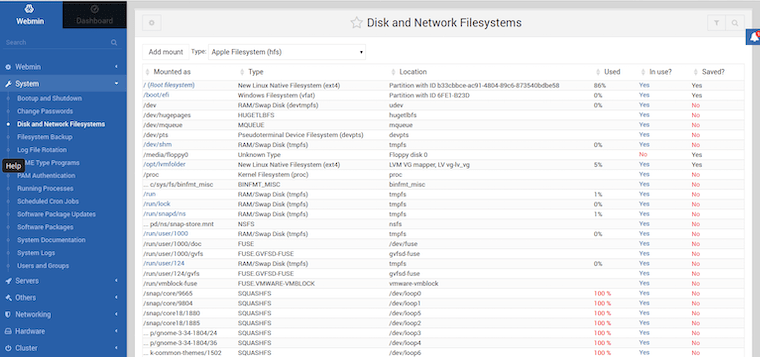How To Install Virtualmin on Ubuntu 24.04 LTS

Virtualmin is a powerful web hosting control panel that simplifies the management of multiple domains and websites on a single server. It offers a user-friendly interface and a wide range of features, making it an excellent choice for system administrators and web hosting providers. In this article, we will guide you through the process of installing Virtualmin on Ubuntu 24.04 LTS, providing step-by-step instructions, troubleshooting tips, and additional resources to help you get started.
Understanding Virtualmin
Virtualmin is an open-source web hosting control panel that allows you to manage multiple virtual hosts, email accounts, databases, and more from a single interface. It is built on top of the popular Webmin system administration tool and integrates seamlessly with various web servers, including Apache and Nginx. Compared to other control panels like cPanel or Plesk, Virtualmin offers a more lightweight and customizable solution, making it suitable for both small and large-scale deployments.
Prerequisites
Before proceeding with the installation of Virtualmin on Ubuntu 24.04 LTS, ensure that you meet the following requirements:
- A server running Ubuntu 24.04 LTS with a minimum of 1 GB RAM and 20 GB disk space.
- Root or sudo access to the server.
- A fully qualified domain name (FQDN) pointing to your server’s IP address.
Step-by-Step Installation Guide
1. Update System Packages
Before installing Virtualmin, it is crucial to update your system packages to ensure compatibility and security. Open a terminal and run the following commands:
sudo apt update
sudo apt upgrade -y
This will fetch the latest package information and upgrade any outdated packages to their latest versions.
2. Download and Run the Virtualmin Installation Script
Virtualmin provides a convenient installation script that automates the setup process. To download and execute the script, use the following commands:
wget http://software.virtualmin.com/gpl/scripts/install.sh
chmod a+x install.sh
sudo ./install.sh
The installation script will prompt you to choose between a full LAMP (Linux, Apache, MySQL, PHP) or LEMP (Linux, Nginx, MySQL, PHP) stack. Select the desired option based on your requirements. The script will then proceed to install the necessary packages and dependencies.
During the installation, you may be asked to provide additional information, such as your server’s fully qualified domain name (FQDN) and a password for the Virtualmin administration interface. Follow the prompts and provide the required details.
3. Configure Firewall Settings
To ensure secure access to the Virtualmin interface, you need to configure your firewall to allow incoming connections on port 10000. Run the following command:
sudo ufw allow 10000/tcp
This will create a firewall rule allowing TCP traffic on port 10000, which is the default port used by Virtualmin.
4. Accessing Virtualmin Interface
Once the installation is complete, you can access the Virtualmin interface using a web browser. Open your preferred browser and navigate to the following URL:
https://your-server-ip:10000
Replace your-server-ip with the actual IP address or domain name of your server. You will be prompted to log in using the username root and the password you set during the installation.
5. Post-Installation Configuration
After logging in to the Virtualmin interface, you will be guided through a post-installation wizard. This wizard helps you configure basic settings such as hostname, email, and DNS. Follow the on-screen instructions and provide the necessary information to complete the initial setup.

It is highly recommended to secure your Virtualmin interface with SSL certificates. Virtualmin provides an option to generate self-signed certificates or import existing ones. To enhance security, consider obtaining a trusted SSL certificate from a reputable certificate authority.
6. Troubleshooting Common Installation Issues
If you encounter any issues during the installation process, here are a few troubleshooting tips:
- If the installation script fails due to missing dependencies, ensure that your system is up to date and try running the script again.
- If you experience conflicts with existing packages or configurations, consider performing a clean installation on a fresh Ubuntu 24.04 LTS server.
- Consult the Virtualmin documentation and community forums for specific error messages and solutions.
Advanced Configuration Options
Virtualmin offers a wide range of advanced configuration options to customize your server setup. From the Virtualmin interface, you can manage server settings, configure email services, set up databases, and more. Take some time to explore the available options and tailor your server to your specific needs.
Additionally, Virtualmin supports various modules and plugins that extend its functionality. These include backup solutions, security enhancements, and performance optimization tools. Visit the Virtualmin Module Repository to discover and install additional modules that suit your requirements.
Congratulations! You have successfully installed Virtualmin. Thanks for using this tutorial for installing the Virtualmin web hosting control panel on your Ubuntu 24.04 LTS system. For additional help or useful information, we recommend you to check the official Virtualmin website.